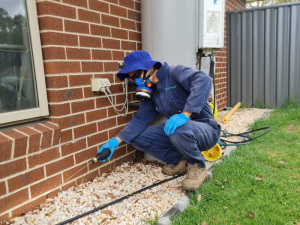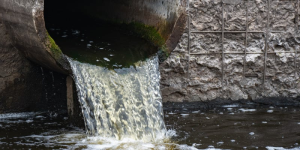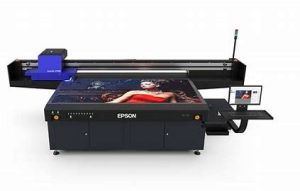Pests are organisms (including bacteria, fungi, viruses, nematodes and vertebrates) that damage or devalue crops, foods, homes and businesses. They can also displace native plant species and alter the environment. Contact Abbotsford Pest Control now!
Certain pests, such as rodents and cockroaches, spread germs that cause disease in people and food-preparation surfaces. Their presence also triggers asthma and other respiratory problems. In many cases, eradication is not possible, but control methods can reduce populations below unacceptable levels.

Preventing pests from causing damage is the best way to protect people, property and the environment. It saves money, time and effort to prevent pest problems than to deal with them once they occur. Pest control has three components: prevention – keeping pests from causing problems; suppression – reducing the numbers of a pest to an acceptable level; and eradication – eliminating a pest completely.
Prevention involves changing the environment to make it less attractive to pests. This includes removing food, water and shelter sources, as well as altering the amount of sunlight, heat, cold and other factors that affect pests’ growth and activities. It also means establishing and maintaining good sanitation and hygiene practices in retail and hospitality businesses and at home.
Changing the environment can also include physical controls such as traps, screens, barriers and fences. Using a combination of biological and chemical methods, such as releasing natural enemies of pests or pathogens that will harm them, can also be effective in preventing pests.
Eliminate Moisture Sources – Many pests are drawn to moist areas, such as basements and crawl spaces. Properly working drainage systems and regularly repairing leaky faucets can help reduce moisture levels and the potential for pest infestation.
Block Entry Points – Many pests enter buildings through doors and windows. Installing and using door sweeps and weather stripping, and ensuring that window and door frames are properly caulked, can all help keep pests out. Keeping Vegetation Trimmed – Plants and trees that are too close to buildings can serve as bridges for pests, especially rodents. Regular trimming of shrubs and hedges can eliminate these bridges.
Use Pest Repellents – Many pests are attracted to certain smells, such as spices and predatory odors. Spraying or coating surfaces with repellants can be an effective deterrent, but it is important to apply them sparingly and properly. For example, a surface spray used on skirting boards or in corners should be applied only after the area has been cleaned thoroughly.
Be Careful Not to Over-Rely on Chemical Controls – It is important to remember that the goal of pest management is to maintain a balance between pests and beneficial organisms, which contribute to the health of ecosystems. The indiscriminate use of chemicals to control pests can cause other problems, such as nutrient depletion and the loss of natural pollinators.
Suppression
Suppression is used when pest activity is seen and the threat of damage becomes apparent. The choice and timing of suppression tactics is based on the biology of the pest, limitations placed on the area where pests are found, tolerance for injury, economics, and impacts of control measures themselves. Suppression tactics include cultural practices, physical barriers, biological controls and pesticide applications.
Biological Controls
Biological control tactics involve the conserving or releasing of organisms that are natural enemies of a particular pest to suppress pest populations and reduce damage without the use of chemical agents. These organisms can be bacteria, viruses, fungi or parasites. They may attack one or more stages of a pest or be specific to the species being controlled.
The most commonly employed biological control in agricultural settings is the use of parasitoids. Parasitic wasps are tiny insects that lay eggs on or in the egg, larvae, pupae, or adult of a pest and then kill it. Typical examples are tachinid flies, trichogramma wasps and ichneumonid wasps. Unlike bacteria and viruses, which can spread in the soil, parasitoids are spread by spores that are dispersed in air and require free water to germinate.
Other types of biological control include the use of predators, which hunt and kill pests, pheromones, which communicate to predators about the presence of pests, and disease, which can destroy the ability of a host insect to reproduce. Many of these natural enemies are found in nature, but some can be mass-produced and purchased for use in greenhouses and nurseries or in some fruit, vegetable, and field crops.
Natural forces affect all organisms, including pests, causing their population to rise and fall. These forces include climate, natural barriers such as mountains and bodies of water, food and shelter availability, and the presence or absence of natural enemies. Some factors have a greater influence on pests than others, but they all contribute to the ebb and flow of pest population levels. The use of pesticides often interferes with the action of natural forces and leads to pest resurgence and environmental harm.
Eradication
When a pest has caused significant damage to human activities or the environment, humans often take steps to eradicate it. This may include eliminating the pest by destroying its eggs or larvae, killing it in its adult stage or removing its fruit or seeds. Eradication also can involve using biological control, which uses organisms that attack or kill pests without harming people or the environment. This type of pest control is used to manage many insect species, including caterpillars, fleas and nematodes. Biological controls often use bacteria that produce toxin proteins that kill the pests they infect. A good example is Bacillus thuringiensis, which can be used to control lepidopteran caterpillars.
In outdoor situations, eradication is usually a secondary goal to prevention and suppression. In enclosed environments, such as health care, food processing and storage facilities, it is sometimes the primary objective. Eradication is particularly common in areas that have been invaded by exotic weeds such as Queen Anne’s lace (Daucus carota) and London rocket (Sisymbrium iriri).
For an eradication programme to be successful, several factors must be taken into account. These include: evaluating the circumstances of the detection of the pest, its identification, estimation of its present and potential distribution, assessment of the risk identified by the pest-initiated PRA and evaluation of the feasibility of conducting an eradication programme.
A general contingency plan should be developed before an eradication programme begins. This will include a process for identifying and communicating with stakeholders. It should also include plans for monitoring and reporting. This information will be useful to identify any further management options and for assessing the success of the eradication programme.
The word eradicate has its origin in the Latin verb eradicare, which means “to pull up by the roots.” Its modern English meaning is more metaphorical: it refers to the removal of something, like a weed or even an entire species. The term is especially apt in the context of disease control, where it has been used to describe the process of reducing the incidence of a disease in a geographical area to zero. Examples of eradication include the elimination of measles and polio, and the near-elimination of smallpox.
Monitoring
Identifying the pest species is key to developing a successful pest control strategy. Once the pest is identified, its life cycle can be tracked and its damage to crops can be assessed. This helps determine whether or when the pest needs to be controlled and what control tactics will be most effective. Pest identification also provides important information about the pest’s biology, including its resistance to certain controls.
The most common way to monitor pests is through visual inspections, using a variety of trapping methods such as sticky traps, insect light traps (ILTs) or insect pheromone traps, or even simply using your own eyes to look at what is happening. More sophisticated monitoring tools can track pest populations over time, allowing farmers to predict potential outbreaks and take action before damage occurs.
These advanced monitoring tools can include digital systems that collect and analyze data in real time, delivering precise and timely insights into pest population levels. This allows for targeted control techniques and reduces the need to use broad-spectrum chemical sprays that can be detrimental to health, the environment and human safety.
In addition to traditional pest detection methods, monitoring can also help predict the occurrence of pests by tracking environmental conditions that may promote their growth such as weather patterns and availability of food or harborage. Biological controls, like biocontrol agents and predators, can also be used to keep pest populations in check.
Once monitoring, identification and scouting indicate that pests are becoming an economic threat and current prevention or avoidance strategies are not working, IPM programs then evaluate control methods both for effectiveness and risk. Less risky methods, such as pheromone lures to disrupt mating, or physical controls, like nets, barriers and trapping are usually chosen first. If these are ineffective, or if the threat level indicates that further intervention is needed, more risky control tactics may be considered, such as selective use of chemicals.
Protecting the aesthetic and structural integrity of artifacts, buildings and collections is another crucial aspect of preventive conservation and is an important goal of many museums and libraries. Museums are often looking to monitor for and to detect pests early in order to limit the impact of these pests on the quality of the collection and facilities. Insect light traps are an efficient tool to use for monitoring stored product pests, such as cigarette beetles and warehouse beetles. These traps emit blue light that is visible to these insects but invisible to humans, making them an ideal choice for monitoring.






